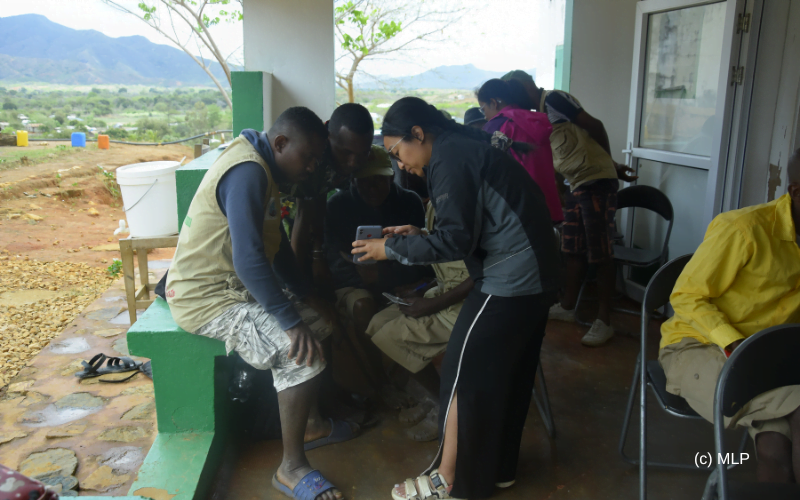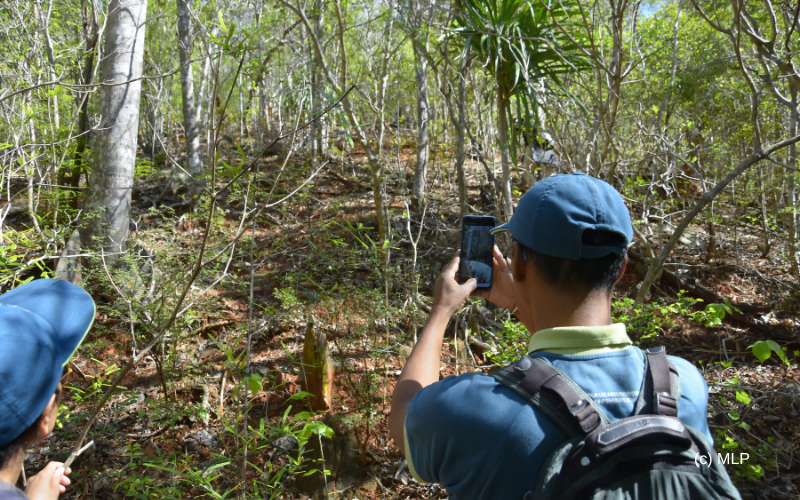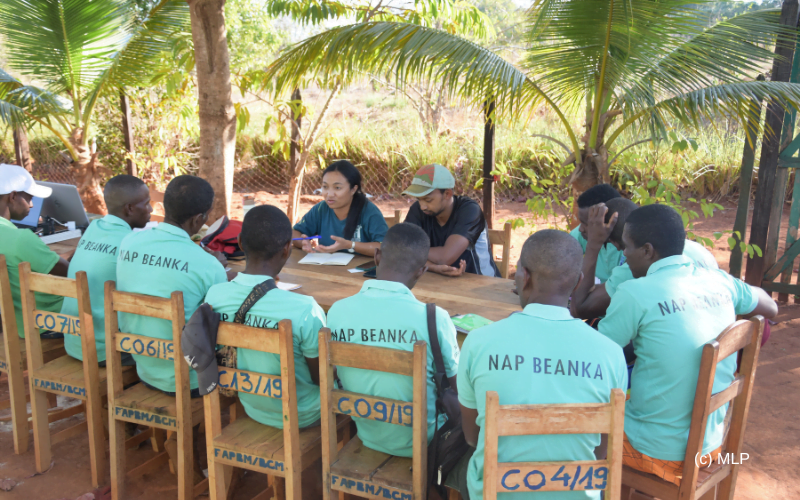
From Mandrozo to Loky Manambato, and Beanka to Antrema, the Madagascar Lemurs Portal team is multiplying their visits to protected areas. Led by Lova Rakotoarimanana, the consultant in charge of the project, these missions aim to finalize the redesign of the portal to make the mobile application known and easily accessible.
Redesign of the portal in progress
Indeed, an evaluation of the portal’s performances and feedbacks from the surveys conducted in 2021 concluded that the portal should be more accessible to the general public. Thus, technical improvements were made to make it a field-based tool through an accessible mobile application. Eventually, the application should be accessible to researchers as well as protected area managers, local communities and tourists. The goal is to integrate as many people as possible in the monitoring of Madagascar lemur populations. In each protected area visited, the functionalities are presented and then tested in real conditions by potential users. Exchanges in the field have guided the improvement of the site and the content of the database.

For a better monitoring of conservation targets
Madagascar Lemurs Portal is a database dedicated to lemurs exclusively. The vision of the portal is to strengthen knowledge about lemurs to contribute to their conservation. Since its inception in 2017, FAPBM has served as the financial mechanism for the project, in consortium with GERP and the US-based Re:Wild Foundation.
The Consortium members have recently conducted a joint mission in Loky Manambato (Northern Madagascar, SAVA Region), to assess progress on the portal redesign. Being a stronghold of the Propithecus tattersalli, Loky Manambato is representative of the field realities, due to its isolation. In offline mode, users were able to integrate or ground-check data. Field agents tested the functionality of ecological monitoring in the protected area.
“The tests carried out in Loky-Manambato show us that the presentation (design) of the mobile application is quite difficult for a non-scientific user. Before the final launch, improvements have to be made to make the application more user-friendly to the general public,” said Lova Rakotoarimanana.
Through the Madagascar Lemurs Portal project, FAPBM supports the development of innovative tools for biodiversity conservation in protected areas.





